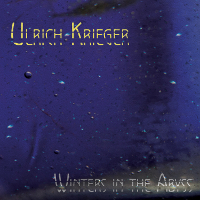|
Ulrich
Krieger - Winters in the Abyss
 Few
hypotheticals are more intriguing—or tempting—than
those that posit the reversal of some fundamental
structure of the world. In the musical world one
such fundamental structure is the overtone series;
with Winters in the Abyss, composer Ulrich Krieger
literally turns it upside down. Few
hypotheticals are more intriguing—or tempting—than
those that posit the reversal of some fundamental
structure of the world. In the musical world one
such fundamental structure is the overtone series;
with Winters in the Abyss, composer Ulrich Krieger
literally turns it upside down.
Krieger is a German composer and saxophonist
probably best known for having arranged Lou Reed’s
notorious Metal Machine Music for orchestra. He
often integrates electronic processing into his
live performances and compositions, as he does
here through the use of close miking and
amplification.
Winters in the Abyss, which is part of a larger
work called the Deep Sea Cycle, is based on the
so-called undertone series. As its name implies,
the undertone series—an artificial construction,
unlike the naturally-occurring overtone series—is
an inversion of the overtone series. In a mirror
image of the overtone series, its sequence of
pitches is densely packed in the lower register
and becomes more spread out the higher up it runs.
With its higher density at the bottom and lower
densities at the top, the series’ structure
parallels the structure of the ocean, its dark,
high pressure lower depths giving way in stages to
a brighter, lower pressure surface.
The composition, a five-movement work in which
each movement represents a stratum of sea depth,
is scored for the low brass of trombone (Matt
Barbier), French horn (Zara Rivera) and contrabass
trombone (Paul Rivera). The movements are
sequenced in reverse order with Movement V, Sun
Lit, leading off and Movement I, Pitch Black,
coming at the end. Arranged this way, the piece
depicts a plunge from the surface through the
intermediate strata to the bottom.
All five movements are dominated by long-duration
tones occurring singly, in pairs and on all three
instruments. Given the low ranges of the
instruments, the overall sound is relatively dark,
even during the Sun Lit movement. Overlapping
tones make for harmonies ranging from discordant
to consonant; Midnight, the third movement, for
example, features frequent major thirds and hints
of a dominant 7 chord emerging from mix—a marked
contrast to Sun Lit’s more jagged and unsettling
tones a half-step or minor ninth apart. And as
expected Pitch Black, the features tightly packed
clusters of notes with very slow harmonic
movement. Dan Barbiero - Avant
Music News
|



